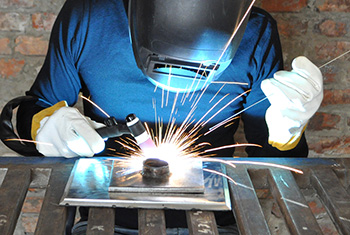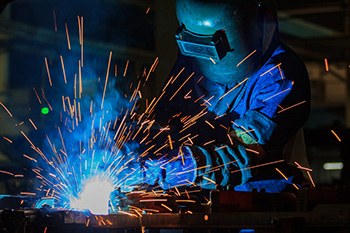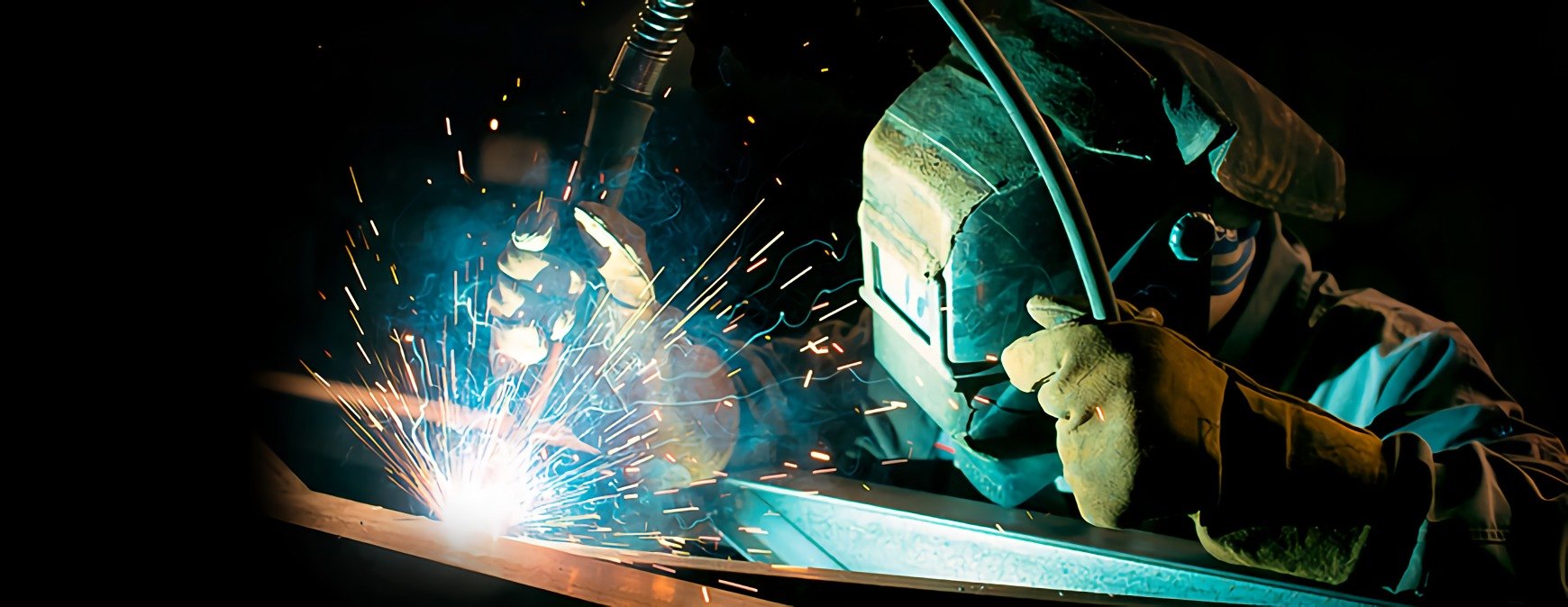RSI is a Great Training Option for Everyone
Learn more about how we can prepare you to advance your career.
There is much more to welding than meets the eye. It’s an art form with a lot of different processes.
Gas metal arc welding (GMAW) is one of the most well-known and important arc welding processes out there. Developed in the late 1940s, this process is popular in industry thanks to its ease of use, versatility and widespread applications.[1][2]
Discover more about gas metal arc welding below.
How Does Gas Metal Arc Welding Work?
The type of equipment used is what really sets gas metal arc welding apart from the other fundamental welding processes typically used.
Gas Metal Arc Welding Equipment

Get Started on the Path to a New Career
Fill out our form to learn how we can help you change your life.
· Power Source
Usually DC+ (reverse) polarity is employed, but alternating current can be used. Along with the wire electrode, the power source creates the electric arc.
· Welding Gun
The welding gun is designed to deliver the wire electrode and shielding gas to the workpiece.
· Wire Drive and Accessories
This setup includes guide tubes, drive rolls and reel stand and serves to continuously feed the wire electrode into the weld pool.
· Wire Electrode
A wide range of types of metal wire electrodes of varying diameters can be utilized, depending on the base metal.[3] The wire electrode conducts the current to the arc zone, melting the base metal and itself into the resulting weld pool to serve as a filler metal.[4]
· Shielding Gas Cylinders and Hoses
Active or inert gas can be used to protect the arc and the weld from environmental contamination. When active gas is employed, the process is called “metal active gas,” or “MAG.” If inert gas is used, welders refer to the process as “metal inert gas,” or “MIG.”[5]
Gas Metal Arc Welding Process
All of this equipment works together to produce strong welds.
First, the welder turns on the control switch of the welding gun, triggering the wire drive to feed the consumable wire electrode and carry the electric current through the gun to the work piece. This allows the welder to strike the electric arc and begin heating the base metal and wire electrode with it.
A weld pool develops, which consumes the wire electrode. At the same time, the welding gun emits the shielding gas to protect the arc and the work.[6]
What Are the Pros and Cons of Gas Metal Arc Welding?

Gas metal arc welding is popular because it can be used on most commercially available metals and alloys. This process is also suitable for the majority of welding positions.[7]
As with anything, this welding process has its upside and downsides.
Pros
- GMAW is great for high production operations because it can be fully or semiautomated.
- This process doesn’t require a high level of welder skill. When semiautomated, the welder needs only to manually control the gun positioning, as well as the travel direction and speed.[8]
- Gas metal arc welding is a cleaner process than shielded metal arc welding and flux-cored arc welding. There are less fumes and no slag to chip off after welding.
- Welders don’t have to start and stop welding thanks to the continuously-fed wire electrode, minimizing defects.[9]
- It can be used on many different types of materials of varying thicknesses.
- The setup is simple and affordable.
Cons
- It can’t be used outdoors because the wind could blow away the shielding gas.
- The equipment isn’t as portable as that of shielded metal arc welding. It can require more frequent maintenance than that of gas tungsten arc welding.
- A spacious, well-ventilated work space is necessary because of the use of shielding gas.[10]
- Base metals must be clean and free of rust.
- Process parameters must be carefully set to prevent fusion defects, particularly when working with thicker base metals.[11][12]
Where Is Gas Metal Arc Welding Used?
Because gas metal arc welding is a quick, clean and economical process, it is used in many industries, including these:
- Pipeline Welding
- Transportation
- Shipbuilding
- Construction
- Automotive Repair
- Manufacturing
If you look around, you can probably easily spot some products of gas metal arc welding. Since this process can be automated, it plays a big role in manufacturing.
Next time you turn on the A/C or furnace or get in your car to drive to work, think of gas metal arc welding!
A Highly Applicable Skill
Gas metal arc welding is a skill with many applications. Anyone interested in learning GMAW can enroll in programs at qualified trade schools. It’s one of the core welding processes out there, along with flux-cored arc welding and gas tungsten arc welding.
Check out some industries where you could take your welding skills after graduation in 3 Welding Careers.
Additional Sources
[1] https://www.lincolnelectric.com/assets/global/products/consumable_miggmawwires-superarc-superarcl-56/c4200.pdf
[2] http://setxind.com/fabrication/welding-processes-closer-look-gmaw/
[3] http://setxind.com/fabrication/welding-processes-closer-look-gmaw/
[4] https://www.praxairdirect.com/Industrial-Gas-and-Welding-Information-Center/Welding-Tips-Tricks-and-Information/MIG-Welding.html
[5] http://www.esabna.com/us/en/automation/gmaw/index.cfm
[6] https://ewi.org/gas-metal-arc-welding-basics-welding-current-welding-voltage/
[7] http://setxind.com/fabrication/welding-processes-closer-look-gmaw/
[8] https://www.praxairdirect.com/Industrial-Gas-and-Welding-Information-Center/Welding-Tips-Tricks-and-Information/MIG-Welding.html
[9] http://setxind.com/fabrication/welding-processes-closer-look-gmaw/
[10] http://setxind.com/fabrication/welding-processes-closer-look-gmaw/
[11] http://setxind.com/fabrication/welding-processes-closer-look-gmaw/
[12] https://www.lincolnelectric.com/assets/global/products/consumable_miggmawwires-superarc-superarcl-56/c4200.pdf
This blog has been labeled as archived as it may no longer contain the most up-to-date data. For a list of all current blog posts, please visit our blog homepage at https://www.rsi.edu/blog/




